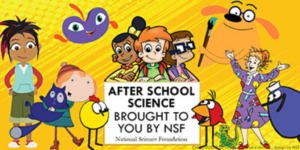May 11, 2020
Seven highlights from 70 years of the National Science Foundation
Posted by Caroline Gleason
Caroline Gleason and Emily Orzechowski, AGU spring 2020 Public Affairs interns
“Scientific progress is one essential key to our security as a nation, to our better health, to more jobs, to a higher standard of living and to our cultural progress.” – Vannevar Bush
The National Science Foundation (NSF) was established 10 May 1950 with a mission to “promote the progress of science; to advance the national health, prosperity and welfare; and to secure the national defense.” In its 70 years, NSF has spurred major advances in scientific knowledge and technological applications by serving as the nation’s leader in basic research funding. We honor NSF’s 70th anniversary by highlighting seven NSF-funded programs in research and education.
1. Deepwater Horizon Oil spill
Ten years ago, the Deepwater Horizon vessel exploded — ultimately spilling over 168 million gallons of oil into the Gulf of Mexico — and NSF stepped in to help respond to the spill. With NSF support, researchers analyzed all sides of the unprecedented environmental crisis: where was the oil moving? How did oil effect the deep ocean? And what could be learned to better prepare us for the future? Learn about the insights and ongoing questions in this consensus review of the spill‘s aftermath and in Eos’s coverage of the legacy that Deepwater Horizon left behind.
2. Public radio and television
NSF is known to many scientists for its history supporting STEM education in the classroom and lab. NSF also helped bring you publicly accessible STEM TV and radio programming by providing major funding for some of your childhood favorites such as the Magic School Bus and Bill Nye the Science Guy. And NSF continues this legacy today – just tune into PBS Newshour and Science Wednesdays.
3. Ozone hole
Responding to reports of significant depletion in atmospheric ozone above Antarctica, NSF worked to quickly assemble the 1986 National Ozone Expedition (NOZE) to determine the cause. NOZE researchers established that the atmosphere contained significantly elevated levels of man-made compounds called chlorofluorocarbons (CFCs). This was strong evidence that CFCs significantly harm the stratospheric ozone that protects the Earth’s surface and the creatures on it, from ultraviolet radiation. The NOZE research on the ozone hole was the first definitive evidence of humanity’s ability to affect the global system and led directly to the 1987 Montreal Protocol, the first global treaty to address the environment.
4. Strong curricula for introductory science
For most non-science majors, formal science education stops at “Science 101.” The Adler Planetarium in Chicago wants to make these undergraduate intro courses count. With funding from NSF’s Improving Undergraduate STEM Education (IUSE) program, the Planetarium is currently developing and testing curricula to enhance introductory courses in astronomy, biology and geoscience. Focusing the courses around citizen science provides opportunities for students to better understand how science works, and gain skills using and analyzing data in real-world applications. This project is ongoing, and the findings will be made available to the public at classroom.zooniverse.org.
5. Deep–sea exploration
NSF has been a major investor in deep–sea research for the last 60 years. With the HOV Alvin’s capability to submerge 15,000 feet and the JOIDES Resolution able to drill 6 miles into the seafloor, NSF-funded research vessels have been at the fore of major discoveries into deep sea exploration. These discoveries have helped the world better understand oceanic dead zones, hurricanes and tsunamis, deep sea biodiversity and the impacts of glacial ice melt. With the oceans undergoing rapid changes and the global race to mine the seabed for rare minerals, deep sea research has become more important than ever.
6. Student opportunities
To address statewide concerns around stormwater pollution, the University of Maine used NSF funding to create the Stormwater Management Research Team (SMART), a program that engaged high school students in stormwater issues within their communities. Participants worked with their teachers, university faculty, and community leaders to develop solutions at a summer “SMART Institute.” The program sought to serve those from backgrounds underrepresented in STEM fields, with over 75% of the participating students self-identifying as either female or a racial minority. A second NSF grant formed a SMART Collaborative to expand the model to more states.
7. COVID-19 Response
NSF is a critical part of the COVID-19 pandemic response. New COVID-19 projects are studying self-sanitizing mask technology, environmental impacts on viral biology and the atomic-level viral structure. What’s more, decades of basic science research in supercomputing technology, 3–D printing and the biology of emerging viruses is being brought to bear on the crisis in myriad ways — from simulating the spread of the virus to rapidly manufacturing life-saving PPE for our frontline workers.
For seven decades NSF has prepared us for complex challenges of the future. Learn more about NSF’s 70 years at their History Wall. And be sure to share your appreciation for NSF on social media throughout the week of May 11th!
Correction: A previous version of this post misrepresented the capabilities of two NSF-funded ocean vessels: the human-occupied vehicle (HOV) Alvin was described as a drilling vessel and the JOIDES Resolution as a deep-ocean submersible, when the reverse is true. This correction is reflected in the text above.









